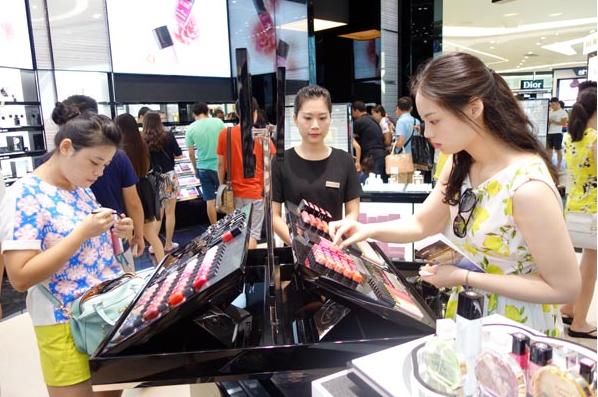Middle-income group can be a bridge to sustainable growth
By Zhu Qiwen (China Daily) Updated: 2016-05-19 07:55
 |
|
Tourists select cosmetics at Sanya Haitang Bay International Shopping Mall. [Photo by Huang Yiming / China Daily] |
The authorities' latest call for efforts to expand the middle-income group is much needed, because China's sustainable growth in the long run is dependent on the formation of a significantly larger middle-income group who will increase consumption and reward supply-side reforms that best serve their needs.
At a meeting of the Central Leading Group for Financial and Economic Affairs on Monday, President Xi Jinping particularly stressed efforts to expand the middle-income group and improve the income distribution mechanism.
This newly-found sense of urgency to further increase the number of middle-income workers is surely related to the role that consumption is now playing in ensuring the stable, moderate growth of the world's second-largest economy.
The latest statistics show that final consumption contributed 84.7 percent of China's economic growth in the first quarter while capital investments' contribution came in at 35.8 percent and net exports of goods and services dragged growth down by 20.5 percent. The consumption share marked a significant jump from the 66.4-percent ratio at the end of 2015.
Although China's economy expanded by only 6.7 percent year-on-year in the first quarter of 2016, the slowest since early 2009, indicating considerably strong headwinds, it is fairly reassuring, if not surprising, to see the rapid rise of consumption as a leading growth engine while traditional growth drivers such as investment and exports are losing steam.
Since all the domestic measures to address overcapacity in many traditional industrial sectors will take time to bear fruit and the global trade will not regain its growth momentum any time soon as the world economy struggles under international financial and political uncertainties, it is reasonable for Chinese policymakers to double down on stronger consumption-led growth to avoid an unexpected hard landing.
Recently, there has been talk of China's economy tending towards L-shaped growth as deep-rooted problems persist and new challenges emerge, including shrinking private investment, the real estate bubble, industrial overcapacity, non-performing loans, local government debt and financial market risk.
- What makes the middle class tick
- Overseas properties a hit among middle class
- Growing middle class globe-trotters sign of great potential
- China's climate action good for middle class
- Middle class a growing, positive force in China
- Growing size of booming Chinese middle class maybe not that big
- Middle-class families bear the brunt of swings on bourses
- Tickling the palates of China's hungry middle-class
- Middle class buying power fails to grow

I’ve lived in China for quite a considerable time including my graduate school years, travelled and worked in a few cities and still choose my destination taking into consideration the density of smog or PM2.5 particulate matter in the region.











